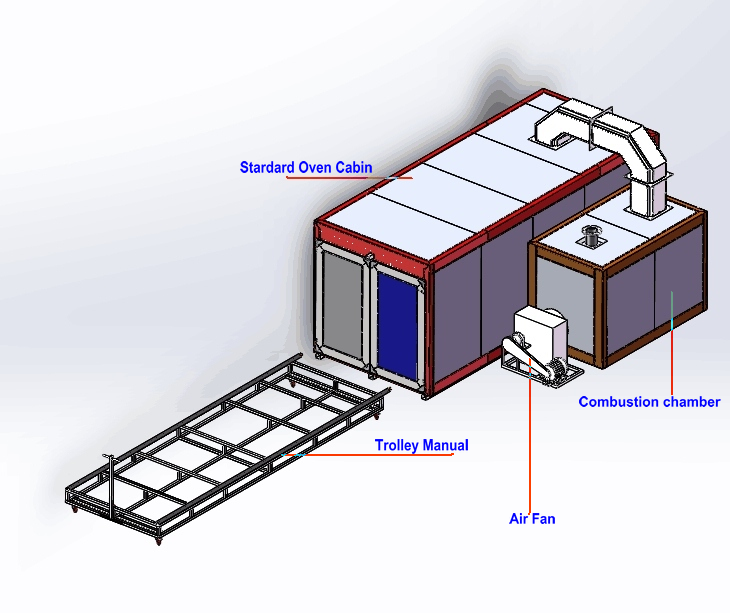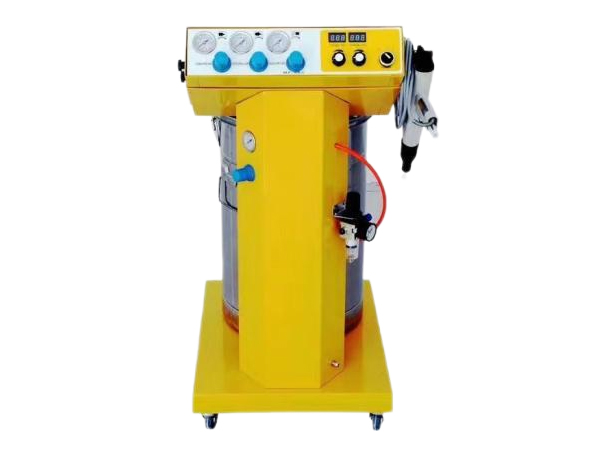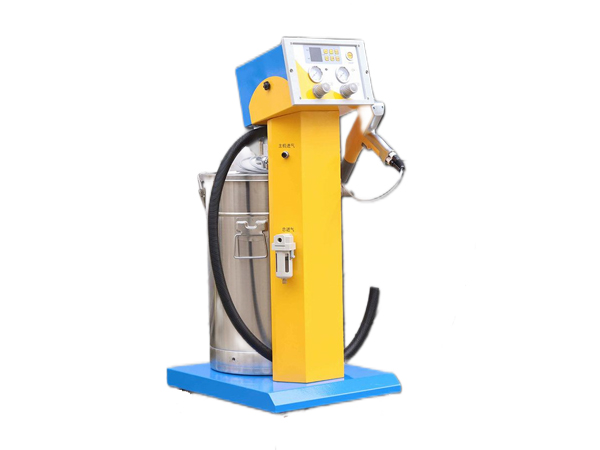The Importance of the Cooling Section of the Curing Oven in the Powder Coating Process
With the continuous development of the construction machinery coating industry and the continuous improvement of environmental protection requirements in various countries, the environmental protection and energy-saving advantages of powder coating technology in the construction machinery industry have gradually emerged, and various construction machinery manufacturers have established powder coating production lines.
In practical applications, powder coating has the advantages of high construction efficiency, low VOCs emissions, and excellent coating performance. In particular, it has great advantages in reducing VOCs emissions. It can avoid the construction of large waste gas treatment equipment, thereby greatly reducing construction costs and operating costs. However, due to the characteristics of engineering machinery spraying workpieces, the cooling method after powder solidification has become a prominent issue restricting the operation of the production line.

1 Characteristics of engineering machinery powder solidification
2 Design principle of cooling section of curing furnace
3 Ways to improve cooling effect
3.1 Increase air volume
The forced cooling chamber is generally designed to directly use outside air for cooling. Since this design is highly sensitive to external temperature, increasing the wind speed of the blow nozzle to accelerate the air flow speed on the surface of the workpiece has a good effect on improving cooling efficiency and reducing cooling time. . For example, the design air speed of the mouthpiece is 14 m/s. When the air supply volume is increased to 16 m/s, the cooling speed will be greatly improved. For some modified equipment, the fan pulley can be replaced, the speed of the fan impeller can be increased, and the design margin of the cooling section fan can be used to increase the air supply volume, thereby achieving the effect of increasing the wind speed of the mouthpiece.
3.2 Make reasonable use of the cache area
The usual way to use the buffer area to solve the heat recovery problem is to allow the workpiece to dissipate heat naturally and let the heat dissipate into the workshop. This method will increase the temperature in relevant areas of the workshop, thus reducing the working environment of the workshop. At the same time, due to the lack of effective heat dissipation means, the heat dissipation efficiency of the workpiece is low. In view of the above shortcomings, now more and more closed buffer areas are used in the use of buffer areas, combined with exhaust fans (negative pressure fans or axial flow fans) to continue to maintain the air flow speed on the surface of the workpiece, and at the same time, prevent the dissipated heat from Affect the work production environment.
3.3 Improve the performance of heat exchange medium
The design concept of the cooling section is usually to blow air to the surface of the workpiece and take away the heat of the workpiece to achieve cooling. During this process, the air flow rate on the surface of the workpiece increases, taking out heat. Due to the low specific heat capacity of the air, the heat taken away by the air per unit volume is very limited. At the same time, due to the increase in air temperature, the ability of the air to take away heat is further reduced. . Therefore, the heat exchange medium is replaced to increase the specific heat capacity, so that the heat that can be taken away by the medium per unit volume increases, thereby improving the effect of the cooling section.
Water is an economical medium with high specific heat capacity. Therefore, an atomizing device can be added to the air supply and exhaust device. After the water is atomized, the mixed medium of air and water mist can be blown evenly to the surface of the workpiece with the blower to cool the workpiece. The evaporation of water mist takes away a large amount of heat, thereby achieving better cooling effect. This method generally increases the cost of construction and use. It is rarely used in the construction machinery industry. It is usually used when there is no buffer area after cooling and parts need to be released in a shorter time.
Qingdao COATOPJIERUIXIN Machinery Co., Ltd. provides you with professional spraying production line solutions with years of installation experience. Welcome to inquire!



